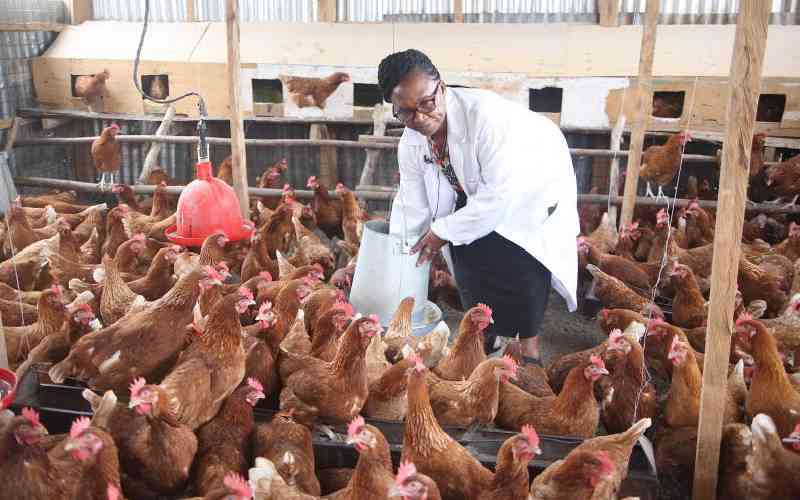Randomised controlled trial evaluating the impact of different methods of HPV DNA testing for cervical cancer screening in Singapores primary care settings: a study protocol
Obstetrics and gynaecology
Randomised controlled trial evaluating the impact of different methods of HPV DNA testing for cervical cancer screening in Singapore’s primary care settings: a study protocol
Cervical cancer remains a significant public health concern in Singapore, with current screening rates at 43%, well below the national target of 70%. In 2019, human papillomavirus (HPV) DNA testing was introduced into the national cervical cancer screening programme, but barriers to participation include embarrassment, privacy concerns and discomfort with clinician-sampled tests. Self-sampled HPV DNA testing offers a promising alternative by providing more privacy and convenience. This study aims to evaluate the impact of including self-sampled HPV DNA testing as an alternative to clinician-sampling on screening uptake, clinical outcomes and cost-effectiveness in primary care.
This pragmatic, open-label, two-arm randomised controlled trial employs a Zelen design. A total of 650 women aged 30–69 who are due for cervical cancer screening will be recruited from National Healthcare Group Polyclinics in Singapore. Participants will be randomly assigned to either the intervention arm (offering both self-sampling and clinician-sampling) or the usual care arm (clinician-sampling only). The primary outcome is the proportion of participants in each arm detected with high-risk HPV. Secondary outcomes include the proportion of participants in each arm who undergo cervical cancer screening (uptake), are referred for colposcopy and are detected with CIN 2/3 or cervical cancer, as well as cost-effectiveness. Acceptability and feasibility of self-sampling will be evaluated through post-screening questionnaires.
Ethical approval was granted by the National Healthcare Group Domain Specific Review Board. Study results will be disseminated through peer-reviewed journals, healthcare conferences and shared with policymakers to guide potential inclusion of self-sampling in Singapore’s national cervical cancer screening programme. Findings from this trial will provide crucial evidence for the potential inclusion of self-sampling in Singapore’s national cervical cancer screening programme, which could increase screening rates and improve public health outcomes.
ClinicalTrials.gov: NCT06528184.
http://creativecommons.org/licenses/by-nc/4.0/
This is an open access article distributed in accordance with the Creative Commons Attribution Non Commercial (CC BY-NC 4.0) license, which permits others to distribute, remix, adapt, build upon this work non-commercially, and license their derivative works on different terms, provided the original work is properly cited, appropriate credit is given, any changes made indicated, and the use is non-commercial. See: http://creativecommons.org/licenses/by-nc/4.0/.
If you wish to reuse any or all of this article please use the link below which will take you to the Copyright Clearance Center’s RightsLink service. You will be able to get a quick price and instant permission to reuse the content in many different ways.
Despite vaccination programmes and cervical cancer screening initiatives worldwide, cervical cancer remains the fourth leading cause of cancer in women globally.1 In 1998, National Health Service England introduced a national cervical screening programme, which has since led to a reduction of over one-third in cervical cancer cases.2
In Singapore, a national cervical cancer screening programme was launched in 2004. However, screening rates remain low at 43%,3 well below the national target of 70% that is necessary to significantly reduce cervical cancer incidence and mortality.4 This highlights the urgent need for improved strategies to boost screening participation.
In 2019, human papillomavirus (HPV) DNA testing replaced traditional cytology testing in Singapore’s national cervical cancer screening programme for women aged 30 and older. While not a diagnostic tool for cervical cancer, HPV DNA testing detects the presence of high-risk HPV (HR-HPV) through viral DNA analysis.5 This method offers higher sensitivity for identifying precancerous and cancerous cervical lesions.6 Clinician-administered HPV DNA tests are available at primary care clinics, with costs ranging from S$0 to S$5 depending on their CHAS (Community Health Assist Scheme) status.7 The 2023 Healthier SG initiative further removed financial barriers by providing free screening for all residents enrolled with a primary care provider.8 However, a proportion of women remain reluctant to undergo cervical cancer screening due to personal reasons, such as concerns over privacy, discomfort and anxiety during clinician-sampling.9
Self-sampled HPV DNA testing, now Food and Drug Administration-approved,10 has emerged as a promising alternative by offering greater privacy, convenience and reduced anxiety. Studies, including a meta-analysis, have demonstrated that self-sampling nearly doubles screening uptake compared with clinician-sampling (pooled ratio 1.89, 95% CI 1.76 to 2.02).11 Countries such as Australia, New Zealand and Malaysia have already incorporated self-sampling into their national screening programmes.12–14
Self-sampled HPV DNA tests have shown comparable accuracy to clinician-sampled tests in detecting cervical intraepithelial neoplasia (CIN) 2 or 3. A 2018 meta-analysis found no significant difference in sensitivity between self-sampling and clinician-sampling methods (pooled ratio 0.99, 95% CI 0.97 to 1.02).15 In Singapore, a study conducted in a hospital-based gynaecology clinic demonstrated substantial agreement between self-sampled and clinician-sampled HPV DNA tests (kappa=0.77, 95% CI 0.67 to 0.86), with 84% of participants preferring self-sampling.16
Although promising, real-world primary care studies, where the majority of screening occurs, are required to assess the population impact of implementing self-sampling HPV DNA testing. To our knowledge, no studies have used the Zelen design randomised controlled trial (RCT) methodology17 to evaluate the impact of incorporating self-sampling on uptake of cervical cancer screening. This study aims to fill this gap by assessing the impact of self-sampling HPV DNA testing on screening uptake and its cost-effectiveness compared with clinician-sampling alone.
Primary objective
To determine the extent to which the introduction of self-sampling HPV DNA testing, in addition to clinician-sampling HPV DNA tests, increases the detection of HR-HPV DNA by improving cervical cancer screening uptake within 3 months.
Secondary objectives
The secondary objectives of this study are:
Hypothesis
Introducing self-sampling alongside clinician-sampling will increase HR-HPV DNA detection by at least 7.7%, with an expected detection rate of 16.7% in the intervention arm compared with 9.0% in the usual care arm.
This open-label, two-arm pragmatic multicentre RCT, using a Zelen design, will recruit 650 participants over 12 months from August 2024 to August 2025 across National Healthcare Group Polyclinics (NHGP) in Singapore. NHGP serves a large population in the central and northern regions of Singapore, with an average daily attendance of 9000 patients through a broad range of primary care services, including acute care, chronic disease management, women’s and child health services and dental care. The study will conclude 2 years from the date of the last recruitment, allowing for a full 2-year follow-up period from recruitment.
The Zelen design, with randomisation occurring prior to obtaining participant consent, is employed to reduce potential bias.17 Participants in the usual care arm will not be informed about the self-sampling option, thus minimising performance bias and the ‘disappointment effect’ that might influence their willingness to undergo clinician-sampling. This approach enables the assessment of real-world screening behaviour.
Based on data from the National Population Health Survey 2022,3 the cervical cancer screening uptake rate in Singapore is currently 43%. A meta-analysis by Dr Gianfranco Di Gennaro et al provided a pooled relative ratio of 1.89 (95% CI 1.76 to 2.02) for self-sampling HPV DNA screening uptake compared with clinician-sampling.11 Using this data, our study estimates an 83.0% uptake rate in the intervention arm (self-sampling or clinician-sampling). Additionally, a local study by Lim et al reported HR-HPV detection rates of 20.1% for self-sampling and 21.0% for clinician-sampling.16 This translates to an estimated HR-HPV detection rate of 16.7% in the intervention arm and 9.0% in the usual care arm (clinician-sampling only). Assuming an alpha level of 0.05, 80% power, a 1:1 allocation ratio and accounting for a 10% loss to follow-up, the required sample size is calculated to be 325 participants per arm, for a total of 650 participants.
Participants will be identified during their primary care visits and referred to a research coordinator for further study procedures. A prerandomisation questionnaire will collect sociodemographic data (age, ethnicity, education level, marital status, employment status) and barriers to cervical cancer screening. The questionnaire will be available in English, Chinese and Malay. Data will be collected via hard copies or through FormSG, a secure digital platform.
Inclusion criteria:
Exclusion criteria:
After completing the questionnaire, participants will be randomised in a 1:1 ratio to either the intervention or usual care arm using sealed opaque envelopes (see figure 1). The randomisation sequence will be computer-generated, using block randomisation with varying block sizes of 2 and 4. The allocation sequence will be concealed from the research coordinator prior to assignment. This study will not use blinding, as it is a pragmatic RCT, designed to reflect the real-world conditions.
Figure 1
Flowchart of participant recruitment. This flowchart outlines the stages of participant recruitment and randomisation for the study, with 650 participants allocated into the intervention arm (self-sampling and clinician-sampling) or the control arm (clinician-sampling only). HPV, human papillomavirus.
In accordance with the Zelen design, written informed consent will be obtained from participants after randomisation and prior to any cervical cancer screening procedures. This process ensures that participants are fully informed about the study’s purpose, procedures, potential risks and benefits. The detailed consent forms for nurse-sampling and self-sampling participants are provided as online supplemental file 1 and online supplemental file 2.
Participants in the Usual Care Arm will be offered clinician-sampled HPV DNA testing. Participants in the Intervention Arm will first be offered clinician-sampled HPV DNA testing, and if they decline, they will be offered self-sampled HPV DNA testing. Educational materials (videos and leaflets) will be provided to aid decision-making. Participants can complete their screening either on the day of recruitment or schedule it within 3 months.
After participants complete cervical cancer screening (whether through self-sampling or clinician-sampling), they will be invited to complete a post-screening questionnaire. This questionnaire is designed to assess their experiences with the screening process and their preferences for future screenings. It will be available in English, Chinese and Malay, and can be completed either as a hard copy or through FormSG, a secure digital platform.
Management of self-sampled HPV DNA test results will follow the process outlined in figure 2, ensuring prompt follow-up and appropriate care for participants:
Figure 2
Management of self-sampling HPV DNA test results. This flowchart illustrates the clinical management pathway for participants who undergo self-sampled HPV DNA testing, including follow-up procedures based on test results. HPV, human papillomavirus.
Management of clinician-sampled HPV DNA test results will follow the process outlined in figure 3.
Figure 3
Management of clinician-sampling HPV DNA test results. This flowchart outlines the clinical management pathway for participants who undergo clinician-sampled HPV DNA testing, detailing follow-up actions based on test outcomes. HPV, human papillomavirus.
All colposcopy referrals will be directed to Kandang Kerbau Women’s and Children’s Hospital, the largest public hospital specialising in women’s healthcare in Singapore.
Patients and the public were not involved in the design, conduct, or reporting of this research.
Detection of HR-HPV
This will be measured based on the proportion of participants detected with HR-HPV (including HPV 16/18 and non-16/18 types) in each arm, within 3 months of recruitment.
Uptake of cervical cancer screening
Screening uptake will be measured by the proportion of participants who submit their HPV DNA tests (either self-sampling or clinician-sampling) in each arm, within 3 months of recruitment.
Colposcopy referrals
Colposcopy referrals will be measured as the proportion of participants referred for colposcopy following abnormal HPV DNA or cytology results in each arm, within 2 years of recruitment.
Detection and treatment of CIN 2, 3 and cervical cancer
This will be measured by the proportion of participants in each arm diagnosed with CIN 2, CIN 3 or cervical cancer via colposcopy and biopsy. Additionally, the study will assess the proportion of diagnosed participants who undergo appropriate treatment for CIN 2, CIN 3 or cervical cancer. Data on diagnosis and treatment will be collected through collaboration with Kandang Kerbau Women's and Children's Hospital (KKH) specialists within 2 years of recruitment.
Cost-effectiveness of offering self-sampling alongside clinician-sampling
The cost-effectiveness of offering self-sampling alongside clinician-sampling will require measurements of both nurse-sampling and self-sampling costs across different stages of care:
Feasibility of self-sampling
The feasibility of self-sampling for cervical cancer screening will be assessed using both subjective and objective measures to capture participants’ experiences and the practical aspects of the self-sampling process.
Subjective feasibility will be evaluated by examining participants’ perceptions of the self-sampling experience. Participants will rate the ease of performing the test using a 5-point Likert scale, alongside their levels of discomfort, anxiety, embarrassment, unpleasantness and trust in the test results. Additionally, preferences for future screening will be explored by assessing participants’ willingness to undergo cervical cancer screening again in 5 years, measured using a 4-point Likert scale. Participants will also indicate whether they would prefer self-sampling or clinician-sampling for their next screening.
Objective feasibility will be assessed by measuring the proportion of successfully submitted and valid self-collected samples. These indicators will provide insights into the practical effectiveness of self-sampling as a screening method.
Facilitators and barriers to the uptake of different methods of cervical cancer screening
Facilitators and barriers to cervical cancer screening uptake will be assessed through participant questionnaires, focusing on demographic factors (age, ethnicity, education level, marital status, housing type, employment status), health-related factors (body mass index, menopausal status, number of pregnancies, prior cervical cancer screening, tampon or menstrual cup use, HPV vaccination status) and psychosocial factors (beliefs and attitudes towards cervical cancer screening).
Beliefs and attitudes will be evaluated using a locally validated Health Belief Model questionnaire, covering the following domains:
Responses will be measured on a 5-point Likert scale ranging from strongly disagree to strongly agree to capture varying levels of agreement with each statement.
Factors associated with cervical cancer and CIN
Factors associated with cervical cancer and CIN will be assessed through data collected from participant questionnaires. Variables will include demographic factors (age, ethnicity, education level, marital status, housing type, employment status), family history of cervical cancer, smoking status, use of contraceptives, immunosuppressive conditions, sexual history and obstetrics-related factors (eg, number of pregnancies, age at first intercourse). HPV vaccination status and frequency of cervical cancer screening will also be included to evaluate their potential associations with cervical cancer and CIN.
All participant data will be de-identified using unique study IDs and stored securely on password-protected, encrypted servers. Only authorised personnel will have access to the data. Data will be subject to routine quality audits and will be stored for a minimum of 5 years following the conclusion of the study, in compliance with institutional policies and regulations.
Descriptive analyses will be conducted for both the intervention and usual care groups. Continuous variables will be summarised using means (with SD) or medians (with IQRs), depending on the data distribution. Categorical variables will be reported as frequencies and percentages. An intention-to-treat approach will be followed for all analyses.
The primary goal of this study is to determine if offering self-sampled HPV DNA testing alongside clinician-sampling increases the detection of HR-HPV DNA. A χ² test will be used to compare detection rates between the two arms, with statistical significance set at p<0.05.
The χ² test will also be used to evaluate differences between the intervention and usual care groups in terms of the proportion of participants who undergo cervical cancer screening, are referred for colposcopy, and are diagnosed and treated for CIN 2, CIN 3 or cervical cancer. Statistical significance will be considered at p<0.05.
A cost-effectiveness analysis (CEA) will be conducted to compare two cervical cancer screening strategies: (1) offering self-sampling alongside clinician-sampling and (2) offering clinician-sampling alone, from a societal perspective. The analysis will be based on data collected during the first 2 years of the RCT and supplemented with data from existing literature. This analysis will account for the costs of performing and processing both types of HPV DNA tests, as well as follow-up care for abnormal results. The incremental cost-effectiveness ratio will be calculated to determine the cost per additional cervical cancer screening conducted over a 5-year time horizon.
To assess the economic value of each screening strategy, a decision tree model will be used to simulate transitions between different health states (eg, normal, CIN1, CIN2, CIN3, cervical cancer) and their associated costs.18 Sensitivity analyses will be conducted to evaluate the robustness of the results by varying key parameters such as screening uptake, costs, adherence rates and treatment rates. These analyses will help identify which factors have the greatest influence on the cost-effectiveness of the screening strategies.
Descriptive statistics will be used to summarise the feasibility outcomes of self-sampling, incorporating both subjective and objective measurements.
For subjective feasibility, the distribution of Likert scale responses will be analysed to assess participants’ perceptions of self-sampling. Mean or median scores will be reported for factors such as ease of performing the test, discomfort, anxiety, embarrassment, unpleasantness and trust in test results. Additionally, the study will determine the proportion of participants who are willing to undergo cervical cancer screening again in 5 years and their preferred screening method (self-sampling or clinician-sampling).
For objective feasibility, the study will evaluate the proportion of successfully submitted self-collected samples and the proportion of valid self-collected samples.
Multivariate logistic regression will identify factors associated with the choice of nurse-sampling, self-sampling or non-screening, based on demographic, health-related and psychosocial variables collected via questionnaires.
Multivariate logistic regression will be conducted to assess factors associated with cervical cancer and CIN. Independent variables will include demographic characteristics, family history of cervical cancer, smoking status, use of contraceptives, immunosuppressive conditions, HPV vaccination status, sexual and reproductive history and screening frequency, as collected through participant questionnaires.
Adverse events (AEs) will be actively monitored throughout the study, particularly for any complications arising from self-sampled or clinician-sampled HPV DNA testing. Participants will be encouraged to report any adverse effects at any time during the study.
The expected AEs may include mild discomfort during the testing process or spotting following the sample collection. These are considered low-risk and typically resolve without intervention. However, severe vaginal bleeding or persistent spotting is considered an unexpected event. Participants will be advised to seek medical attention if such symptoms occur and to inform the study team immediately.
The study team will assess all AEs for severity and relation to the intervention. Follow-up care will be provided as necessary. A review of safety outcomes will be conducted by the principal investigator and co-investigators every 3 months to ensure ongoing participant safety.
Ethical approval has been granted by the NHG Domain Specific Review Board (NHG DSRB 2024/00194). The trial is registered with ClinicalTrials.gov (NCT06528184). Study results will be disseminated through peer-reviewed publications, presentations and reports to policymakers. The findings will be shared with the Ministry of Health to provide guidance on the potential inclusion of self-sampling in the national programme.
This pragmatic RCT evaluates the impact of self-sampled HPV DNA testing on clinical outcomes and cost-effectiveness in cervical cancer screening. Unlike previous studies that have primarily focused on screening uptake rates, this is the first study to assess the detection of HR-HPV DNA as a primary outcome. It is also the first study in Singapore to evaluate the clinical impact and cost-effectiveness of self-sampling in a population health context. The pragmatic design, combined with the Zelen approach, reflects real-world clinical practice, enhancing the generalisability of the findings and their relevance to national health policies.
The potential impact of the study is significant. If inclusion of self-sampling leads to higher detection rates of HR-HPV and increased screening uptake, it could support the inclusion of self-sampling in Singapore’s national cervical cancer screening programme. This would provide a more flexible, patient-centred approach, particularly benefiting women who may avoid clinician-based sampling due to privacy or discomfort concerns.
The trial’s CEA will offer insights into whether self-sampling is a financially viable strategy for public health programmes. Additionally, by examining acceptability and feasibility, the study will highlight how well self-sampling is received, particularly among under-screened populations, and inform strategies to improve screening participation.
However, several limitations should be noted. First, the study is conducted within large polyclinics, which may limit the generalisability of the findings to smaller general practitioner clinics, where different patient populations and screening practices may apply. Second, self-reported data on acceptability and feasibility may be influenced by social desirability bias; therefore, self-administration of questionnaires will be conducted where possible.
In conclusion, this study is positioned to significantly advance our understanding of self-sampled HPV DNA testing within Singapore’s cervical cancer screening framework. By delivering empirical evidence on clinical effectiveness and cost-efficiency, the trial may catalyse substantial policy changes and enhance healthcare delivery. Ultimately, the findings aim to empower women by providing a more accessible and acceptable screening option, thereby contributing to a reduction in cervical cancer incidence in Singapore.
Consent obtained directly from patient(s).
We would like to express our gratitude to Roche for providing the self-sampling swabs and to Innoquest Laboratory for adjusting their laboratory workflow to accommodate this study. Special thanks to Dr Koh Yan Tong, Dr Leow Chee Yong, Dr Ang Ling Min, Dr Amelia Binte Ahmad Hatib and Ms Nur Ba'eyah Binte Roslin for their invaluable assistance with translating the questionnaires. We also extend our appreciation to Ms Lee Ying Hui, Ms Nur Diyana Binte Mohd Shafie Maskon, Ms Felicia Chan Hui Yin, Mr Lew Kaiwei Jeremy and Dr Sabrina Lee Poay Sian for their support in managing the study logistics. Additionally, we would like to thank Dr Brandon Chua and Dr Hwee Lin Wee for providing expert advice on the cost-effectiveness analysis.











